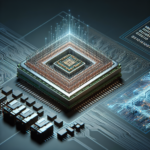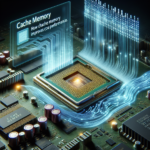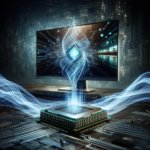How CPUs Handle Real-Time Data Processing

Introduction
In today’s fast-paced digital world, the ability to process real-time data is crucial for various applications, from autonomous vehicles to financial trading systems. At the heart of this capability lies the Central Processing Unit (CPU), the brain of any computing system. This article delves into how CPUs handle real-time data processing, exploring the underlying mechanisms, challenges, and advancements in this field.
Understanding Real-Time Data Processing
What is Real-Time Data Processing?
Real-time data processing refers to the ability to process data as it is generated or received, with minimal latency. This is essential for applications that require immediate responses, such as medical monitoring systems, industrial automation, and online gaming. Unlike batch processing, where data is collected and processed at a later time, real-time processing demands continuous input, processing, and output.
Types of Real-Time Systems
Real-time systems can be broadly categorized into two types:
- Hard Real-Time Systems: These systems have strict timing constraints, and failure to meet these constraints can lead to catastrophic consequences. Examples include air traffic control systems and pacemakers.
- Soft Real-Time Systems: These systems have more lenient timing constraints, and occasional delays are tolerable. Examples include video streaming and online gaming.
CPU Architecture and Real-Time Processing
Core Components of a CPU
To understand how CPUs handle real-time data processing, it’s essential to know the core components of a CPU:
- Arithmetic Logic Unit (ALU): Performs arithmetic and logical operations.
- Control Unit (CU): Directs the operation of the processor.
- Registers: Small, fast storage locations within the CPU.
- Cache: A smaller, faster type of volatile memory that provides high-speed data access to the CPU.
Instruction Set Architecture (ISA)
The ISA defines the set of instructions that a CPU can execute. For real-time processing, the ISA must support efficient context switching, interrupt handling, and fast execution of critical instructions. Popular ISAs like x86 and ARM have evolved to include features that enhance real-time processing capabilities.
Multi-Core Processors
Modern CPUs often feature multiple cores, allowing them to handle multiple tasks simultaneously. This is particularly beneficial for real-time data processing, as different cores can be dedicated to specific tasks, reducing latency and improving overall performance.
Mechanisms for Real-Time Data Processing
Interrupt Handling
Interrupts are signals that inform the CPU of an event that needs immediate attention. Efficient interrupt handling is crucial for real-time systems. When an interrupt occurs, the CPU suspends its current task, saves its state, and executes an interrupt service routine (ISR) to address the event. Once the ISR is complete, the CPU resumes its previous task.
Context Switching
Context switching involves saving the state of a currently running task and loading the state of another task. This is essential for multitasking in real-time systems. Efficient context switching minimizes the time the CPU spends switching between tasks, thereby reducing latency.
Real-Time Operating Systems (RTOS)
An RTOS is designed to manage hardware resources and execute tasks with precise timing. It provides features like task prioritization, real-time scheduling, and low-latency interrupt handling, making it ideal for real-time data processing. Popular RTOS examples include FreeRTOS, VxWorks, and QNX.
Challenges in Real-Time Data Processing
Latency
Latency is the delay between the occurrence of an event and the system’s response to it. Minimizing latency is critical for real-time systems. Factors contributing to latency include interrupt handling time, context switching time, and data transfer delays.
Resource Management
Efficient resource management is essential to ensure that real-time tasks receive the necessary CPU time and memory. This involves prioritizing tasks, managing interrupts, and optimizing memory usage.
Scalability
As the complexity of real-time systems increases, scalability becomes a challenge. Ensuring that the system can handle an increasing number of tasks without compromising performance is crucial.
Advancements in Real-Time Data Processing
Hardware Acceleration
Hardware acceleration involves using specialized hardware components to perform specific tasks more efficiently than a general-purpose CPU. Examples include Graphics Processing Units (GPUs) for parallel processing and Field-Programmable Gate Arrays (FPGAs) for customizable hardware acceleration.
Edge Computing
Edge computing involves processing data closer to the source of data generation, reducing latency and bandwidth usage. This is particularly beneficial for real-time applications like autonomous vehicles and IoT devices.
Machine Learning and AI
Machine learning and AI algorithms are increasingly being integrated into real-time systems to enhance decision-making and predictive capabilities. These algorithms require efficient data processing and low-latency execution, making advancements in CPU architecture and real-time processing essential.
FAQ
What is the difference between real-time and non-real-time processing?
Real-time processing involves handling data as it is generated or received, with minimal latency. Non-real-time processing, on the other hand, does not have strict timing constraints and can tolerate delays. Real-time processing is essential for applications that require immediate responses, while non-real-time processing is suitable for tasks that can be performed at a later time.
How do multi-core processors benefit real-time data processing?
Multi-core processors allow multiple tasks to be executed simultaneously, reducing latency and improving overall performance. In real-time systems, different cores can be dedicated to specific tasks, ensuring that critical tasks receive the necessary CPU time and resources.
What role does an RTOS play in real-time data processing?
An RTOS manages hardware resources and executes tasks with precise timing. It provides features like task prioritization, real-time scheduling, and low-latency interrupt handling, making it ideal for real-time data processing. An RTOS ensures that critical tasks are executed within their timing constraints.
What are the main challenges in real-time data processing?
The main challenges in real-time data processing include minimizing latency, efficient resource management, and ensuring scalability. These challenges require careful design and optimization of both hardware and software components to ensure that real-time tasks are executed within their timing constraints.
How does hardware acceleration improve real-time data processing?
Hardware acceleration involves using specialized hardware components to perform specific tasks more efficiently than a general-purpose CPU. This reduces the processing time and latency for critical tasks, improving the overall performance of real-time systems. Examples of hardware acceleration include GPUs for parallel processing and FPGAs for customizable hardware acceleration.
Conclusion
Real-time data processing is a critical capability for various applications, from autonomous vehicles to financial trading systems. CPUs play a central role in enabling this capability, leveraging features like multi-core processing, efficient interrupt handling, and real-time operating systems. While challenges like latency, resource management, and scalability exist, advancements in hardware acceleration, edge computing, and AI are driving the evolution of real-time data processing. As technology continues to advance, the ability of CPUs to handle real-time data processing will only improve, opening up new possibilities and applications.




